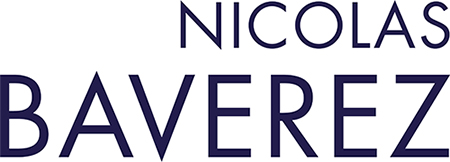Wars are all around us once again and yet our military program is incoherent and involves dangerous gambles.
The Munich conference on security highlighted the rise in the risk of major conflicts. A new arms race is on, costing over 1,800 billion dollars a year. Jihadism remains a threat of the first order: the military defeat of Islamic State in the Levant has led to its redeployment in Nigeria, the Philippines, Afghanistan and Egypt, as well as its transformation into a social network set in the heart of democratic societies. However, what is new is the growing possibility of a large-scale conflict between nations. Beijing is pursuing its annexation of the China Sea from bases on strategic militarized islands, particularly in the Spratly archipelago. Russia is calling into question the frontiers of Europe and has established itself as a key player in the Middle East. Turkey has become an Islamist démocrature [a combination of democracy and dictatorship], is intervening directly in Syria against the USA and its allied forces, and is growing closer to Moscow. There is a dangerous escalation in tension between Iran and Israel. North Korea is turning a blind eye to international sanctions and speeding up its nuclear and ballistic missiles program in order to make its regime secure.
In a world that is becoming increasingly dangerous, the democracies seem vulnerable and divided. The USA’s veering toward nationalism has meant that its military budget has soared, being expected to reach 716 billion dollars, and that the security guarantees that the USA used to provide for its allies are falling apart. NATO is facing an existential crisis. Although it was indispensable in the handling of the Balkan crises in the 1990s, the alliance is proving somewhat ineffective in stemming Russian expansion and combating terrorism. It is being destabilized by criticism from the Trump administration and by growing tension with Turkey, which houses NATO’s land forces headquarters in Izmir whilst equipping itself with Russian S-400 anti-air missiles. Any extension of deterrents is incompatible with Donald Trump’s unpredictability. The USA’s rearmament, which will cost 1,200 billion over thirty years, is going hand in hand with a more flexible position – extending the the tactical use of nuclear weapons – which cannot fail to raise considerable political opposition from its allies.
Therefore, Europe has no other choice but to take its own security in hand, as Angela Merkel stated. But, for the moment, the EU is being torn apart over immigration, the fight against Jihadism and its response to Russian expansionism. Brexit is depriving it of a third of its military potential. Germany, politically weakened, does not intend to devote any more than 2 billion extra euros to defense over the next four years, despite a 38-billion budget surplus in 2017. Europe has taken a first step in the field of defense by creating a fund of 1.5 billion euros as from 2020, including 500 million given over to research. But this institutional and financial breakthrough is no replacement for the ability to carry out victory-winning operations.
France therefore finds itself with a huge responsibility. After Brexit, it will be the only country in the EU with a permanent seat on the UN Security Council, an autonomous nuclear deterrent and a fully comprehensive army. And yet the law concerning the military program between 2019 and 2025 only partly meets the challenge of the new strategic environment. The desire to position itself globally is coherent with the globalization that underpins 21st century, as does diplomacy that favors intervention in Syria and the Gulf. Among the positive points are the priority given to innovation, which will be backed by a 1 billion euro fund, and giving armament programs a European orientiation – although this is jeopardized by Brexit and by German meanderings with regard to exports. Above all, we see the beginnings of a return to power with the creation of 6,000 posts – including 1,500 in intelligence and 1,500 in the cyber sector – and with the effort to regenerate the armed forces in face of worn-out manpower and equipment.
However, the law concerning the military program is incoherent and involves dangerous gambles. Crisis scenarios and military operational contracts have not been revised, although the strategic environment is rapidly changing. It reaffirms the principles of sustained strategic autonomy and a fully comprehensive army, but the priority given to military regeneration and the nuclear deterrent weighs heavily against the modernization of equipment. The lack of capacity – a legacy of the Hollande presidency – remains, especially in the field of air power where the focus on drones has meant that we are seriously lagging behind in terms of combat aircraft and helicopters.
Taken together, all the pressures end up in a financial cul de sac. On the one hand, t 295 billion euros are needed up until 2025. On the other hand, planned expenditure up to 2023 is only 198 billion. The budget increase of 1.7 billion euros for 2018 hardly covers the cost of external operations (1.3 billion) and the financing of measures decided on in 2016. The defense budget should therefore be increased by 3 billion every year between 2023 and 2025, to reach an objective of 2% of GDP. Furthermore, there remains the promise to bring in compulsory national service, lasting between three and six months. The aims, as yet vague, involve considerable expense: over 5 billion euros of investment and 3 billion in annual operational costs. In all, the strategic environment is new but French defense policy is not. Like François Hollande, Emmanuel Macron is postponing the necessary redirection of expenditure on the welfare state to the central government’s coffers and is leaving it up to his successor to rearm France.
(Column published in Le Point, 22nd February 2018)
